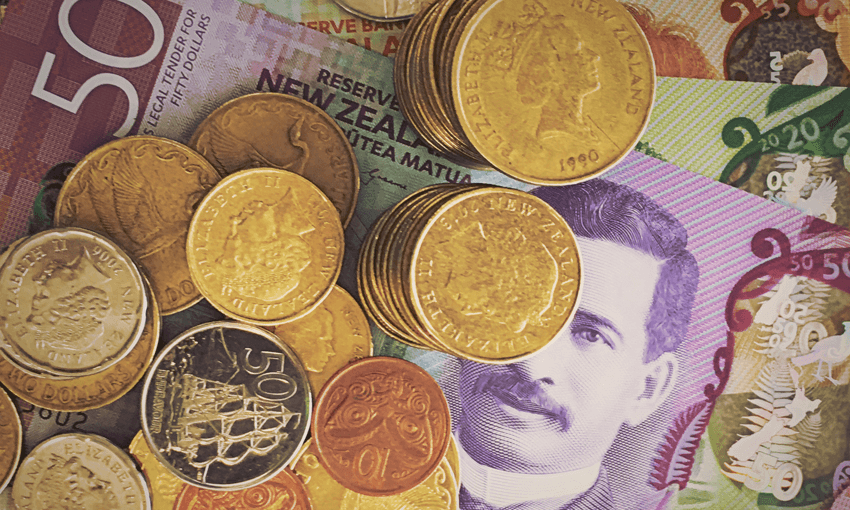The government provided a $12.1 billion stimulus package to cushion the blow of Covid-19. The NZIER public good team explains where that money is coming from, and how the whole thing works.
Normal life is on hold. Buying and selling across New Zealand has ground to a standstill. While most of us attempt to do what work we can from home while also juggling childcare and home schooling, those essential to a skeleton economy brave the outdoors to keep our supermarkets stocked, our bins empty and the hospitals staffed. On top of that, we’re all leaping across the pavements to keep a two-metre distance, staying active with mild, local exercise and are generally trying to manage the stress of it all.
The abrupt halt of life as we know it turned off the normally reliable flow of money for whole industries including retail, hospitality and tourism. Affected businesses still have bills to pay – including rent and employee wages – so the government responded with a major stimulus package to make sure businesses could keep paying their staff and could survive the time out. The package includes wage subsidies to help keep people in jobs, income support including an increase in benefit payments and tax changes for business. It also includes aviation support and a boost to healthcare funding.
Overall, the package is estimated to cost about $12 billion. That’s a big number. It’s around 4% of our gross domestic product (GDP), which is what you get if you add up the cost of all our goods and services in the economy. To put it into perspective, New Zealand’s GDP has averaged 2.3% growth per year over the past 10 years.
How do we pay for it?
Obviously, the government doesn’t just have a spare $12 billion sitting around – but like the rest of us, it can borrow when it wants to spend more than it has. It does this by selling government bonds, called Kiwi Bonds. These are basically little packages of debt which promise to pay a fixed amount of interest, and to repay the borrowed amount after an agreed length of time (with Kiwi Bonds, time frames range from six months to four years). These bonds are considered low risk, because people trust that the government will be able to pay them back in the future. They’re a staple for investors, and you’re likely to have invested in them yourself if you’ve got a KiwiSaver.
Selling government bonds in a crisis is a great move for raising the necessary cash, but it does come with an unwanted side effect; higher interest rates. Selling more bonds essentially has the danger of flooding the bond market – and like an apple glut, when the supply goes up, prices go down. But unlike apples, when the price of a bond goes down, the yield (the money you get back from it) is now bigger relative to the price you paid for it, because the interest is fixed. For example, say you pay $100 for a bond which returns $5 every year for five years, and then you get the $100 back at the end – that makes the interest rate on it 5% per year. But if the price falls to $80, you still get $5 a year, so the interest rate has effectively increased to 6.3%. And you also still get $100 back at the end, pushing the overall interest even higher. Since retail banks use bond interest rates as part of the equation for setting their own interest rates on our mortgages and savings accounts, an increase in bond interest can increase interest rates for us all – something the Reserve Bank wants to avoid.
Why does the Reserve Bank want low interest rates?
You’ll be familiar with interest rates – they determine how much you get on your savings, and how much you need to pay back on loans (including mortgages). Interest rates can have a powerful effect on our financial decisions. Put them up, and there’s an incentive to save more. Put them down, and the incentive decreases – so there’s more reason to spend. There’s also less to pay back on loans when interest rates are low. Since we’re heading into a pandemic-induced recession, the Reserve Bank wants to make it cheaper for businesses to borrow money, and reduce mortgage payments for homeowners, so that means it’s ideal to keep interest rates low.
Most of the time, the Reserve Bank can use a neat tool to steer interest rates in the right direction: it can set the official cash rate (OCR). The OCR is related to the rate the Reserve Bank charges on “settlement accounts” that all banks have at the Reserve Bank – commercial banks use these to transfer money between each other. When the OCR changes, the commercial banks tend to pass on the difference to us folk with our regular bank accounts. However, on this occasion the Reserve Bank has pretty much exhausted its OCR tool, having already cut the OCR from 1% to 0.25% earlier in March. Zero or negative OCR rates are possible, but need a bit of bank admin – the Reserve Bank reckons we’re not quite set up for it yet.
So are we stuck?
When you’re all out of OCR options and interest rates still threaten to rise, there’s another tool the Reserve Bank can use, and this is the first time we’ve used it here in New Zealand. This time it’s all about stopping the bonds from getting cheaper in the first place, by guaranteeing to buy the bonds wherever they are being held. Think of the apple glut: if one trustworthy (and rich) person says they will buy any amount of apples for $4 a kilo, an apple seller won’t accept a price lower than $4 when they go to the market. It creates a floor to the market. It’s the same with bonds – when the Reserve Bank promises to buy all the government bonds for a baseline price, the prices won’t fall. And if the bond price doesn’t fall, the bond interest rates won’t rise. Low interest rates are maintained. Phew.
Hold up… where does the Reserve Bank get money to buy the bonds?
That’s the clever bit. Conveniently, the Reserve Bank can produce NZ dollars, so it can actually buy the bonds by effectively creating money. As an extra bonus, buying up government bonds held by retail banks puts more money into circulation, so banks are able to lend more. Using new money to buy government bonds is called quantitative easing (QE), and it was a popular tool for the countries worst affected by the 2008 financial crisis.
So do we need to pay the money back?
Sort of. There’s heaps more government bonds held by investors and the Reserve Bank that will need to be paid back in the future, but governments often ‘rollover’ national debt, meaning they sell more government bonds to pay off the old ones. National debt is reduced when the government collects more money in taxes than it spends; this is called a budget surplus. When the Labour-led government came in to power in 2017, it committed to budget responsibility rules, meaning it wouldn’t get into too much debt when planning the yearly spending. Fortunately the rules include a caveat for exceptional circumstances, which Covid-19 clearly is. It’s up to the government to decide when the time is right to start running a budget surplus to pay back the debt – too soon prolongs the recession and hampers recovery, but with every year without a surplus, the debt grows bigger.
Why don’t we use QE all the time?
I know, right? Every single government budget there’s not quite enough money for everything we want, whether it’s better roads, a pay rise for teachers, or more hospital beds. But we save QE for emergencies because not only does it have to be paid back, it also carries the risk of pushing up prices. That’s because money follows the classic demand and supply rules, so increasing the amount of money in circulation can make our money worth less. When you have to spend more to get the same amount, that’s effectively a general rise in prices – also known as inflation. As a general rule, a little bit of inflation is good, too much is bad – one of the core roles of the Reserve Bank is to keep inflation between 1-3%.
In a time of economic confidence, increasing the money supply can push up inflation too much and cause all sorts of problems. It creates uncertainty about the future value of money and means we need wage, benefit and pension increases to keep up with the higher cost of living. However, in a recession, people are uncertain about their future income and tend to buy less stuff, which can cause inflation to fall. Since people are predicting that our buying will take a while to pick up again once the lockdown is over, the Reserve Bank isn’t worried that QE will push inflation too high this time. Once the risk of inflation is real the Reserve Bank will be able to relax – the economy will be working again.

